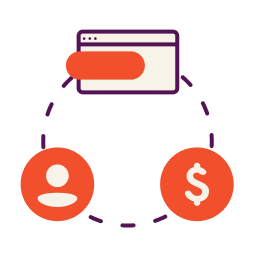Everyone seems to have an opinion on getting things done – especially through the art of multitasking. With new studies and opinions coming out on the topic every year, the consensus on whether it works is mixed:
“It’s counterproductive.”
“It’s necessary.”
“It’s dangerous.”
Some even choose to believe that it doesn’t really exist.
No matter which school of thought you choose to follow, the reality is that trying to do more than one thing at a time is common, and we aren’t likely to abandon it in our culture any time soon. That is especially true for business owners, many of whom wear juggle dozens of different tasks and experience a rush when forced to tackle jobs simultaneously.
So, is there an approach toward multitasking that is healthier than others? Can you separate the foolish tips from the good ones? Here are four widely-accepted times when it’s probably OK to be doing two (or more) tasks in tandem.
1. In the Shower – Or Bath
The mere act of allowing hot water and body wash to soak your soul isn’t so difficult that you can’t do other things while it’s happening. Whether you choose to catch up on a podcast, read a book, or plan out your next speaking gig, the shower is an excellent place to let your mind wander and settle on a few very good ideas. The risk is low; if you happen to wash your hair twice, what’s the big deal?
The bathroom is also one of the most common places to experience a “Eureka!” moment. That’s because bathing is usually a source of relaxation for many, triggering a dopamine rush that is good for generating all kinds of good ideas. The next time you feel like handling your hygiene, bring a good book (or better yet, a waterproof notepad) and see what your mind can create while you wash away your worries.
2. When Dining
I personally think it’s rude to text at the table. Devouring a book is only slightly less offensive. If you’re eating solo (and in public), however, reading — or even journaling – is a great way to avoid the awkwardness that comes when you’re forced to look down at your plate and seem very interested in simply eating.
Frequently unaccompanied diners have seemed to master the art of reading while eating, making sure to position their plate between themselves and their favorite title. They also avoid messy foods and are certain to pay attention to the wait staff when appropriate. Dinner out can be a good opportunity to catch up on that book club chapter you’ve been putting off; just make sure your choice in paperbacks is appropriate for your surroundings.
3. At the Gym
If listening to your playlist of driving power rock tunes and mastering the elliptical isn’t enough multitasking for you, it may be time to up your brain game with even more duties. Studies have shown that doing more than one thing at the gym can increase the intensity of workout by 25% — without even trying. Most of us have seen gym buffs study for class, catch up on a podcast, or stream their favorite HBO show while working out. If you have the place to yourself, if may also be acceptable to make a brief call.
Before you worry that you’re not coordinated enough to work the treadmill and memorize your periodic table, you should acknowledge that there are levels to multitasking that you can build up to. Equipment that requires less balancing (such as a stationary bike) is best for beginners. Try a task that’s purely passive to go with it – such as the podcast or playlist. As you become more confident (and coordinated) you can then move on to actively learning a language or reading. Pair it with more aggressive movements for maximum multitask effect.
4. While Sleeping
The jury is out on whether learning a new skill or habit can be done while you snooze. More recent studies, however, do show that some cognitive changes can and do happen – if done during the right cycle of sleep. While you cannot likely learn an entirely new language just during your sleep time, it’s likely that your recall of new German words will be better if those same words are recited to you in the night in a way that is gentle and not disruptive to your sleep patterns.
Study participants that spent a good amount of their evening in slow-wave-sleep (SWS) had a better experience moving information from their short-term memories to long term memories. (This is probably why those who don’t get much of this type of sleep seem to be more forgetful than others.) Assuming you can brush up on a new language without limiting this essential sleep stage, it’s likely that you can learn info faster while you doze.
Is It Even a Good Idea?
There are many more times when it is inappropriate to multi-task. Obvious ones include when you’re spending quality time with your family, driving, or doing something risky that would require your absolute concentration. Even if you are convinced that you know when it is smart to multi-task and when it isn’t, consider that most of us just aren’t that good at switching back and forth quickly between activities. The time we save in the attempt of multi-tasking may have negative consequences that make the experiment too haphazard to even try.
Of course, if you are a super-tasker, that’s not a problem. 2% of the population has been identified as having no decrease in performance when trying to tackle more than one job at a time. Some of them can even drive and do the very things that would give most of us a ticket! Figuring out if you’re in that group, however, isn’t easy – or practical. (Most of these super-taskers have been discovered on accident, in ways that are too risky to put widely into practice). In the meantime, it’s safer to assume that we’re just humans, with limited minds, doing the best we can with the time we’ve been given.
This article was originally written on October 13, 2017 and updated on February 1, 2021.


I do my best thinking when I’m at my part-time job which is washing dishes at a grocery store. I scrub away at dried on egg bake dishes and think about how to approach the next business meeting (my husband and I are real estate investors who specialize in fixing and flipping physically distressed properties.)